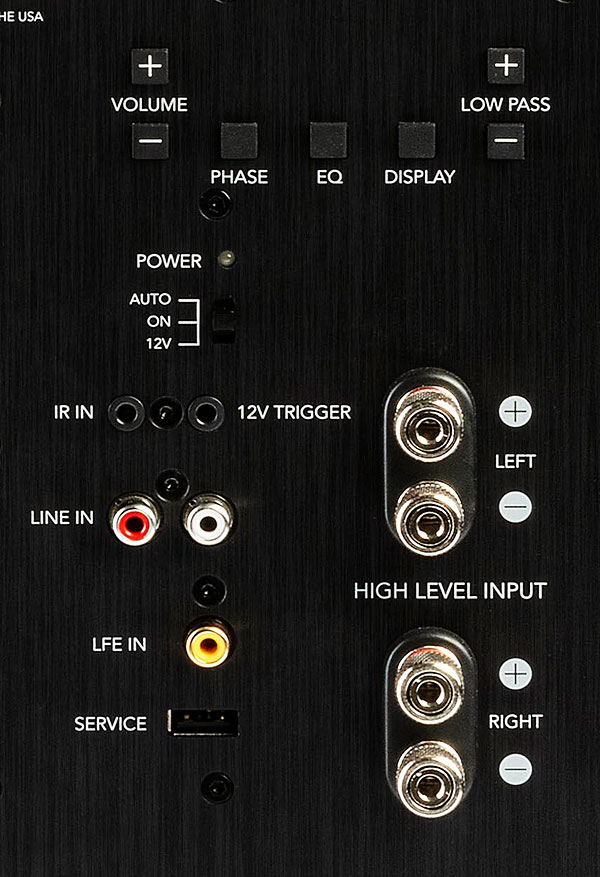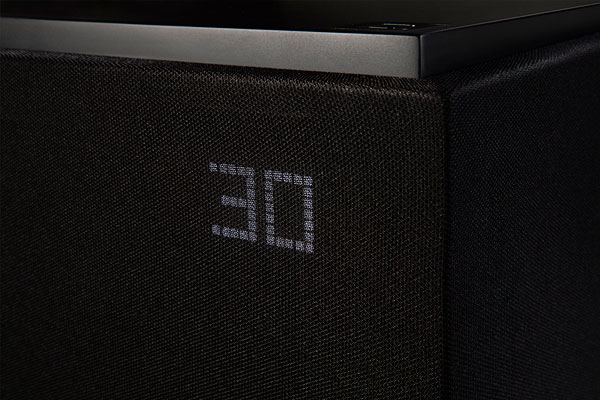Definitive Technology Descend DN15 Subwoofer Review

AT A GLANCE
Plus
Powerful output
Intelligent Phase Control allows for precise alignment with main speakers
Useful remote control
Minus
Large size makes optimal placement difficult
No custom EQ options
THE VERDICT
Definitive Technology flagship subwoofer delivers extended bass and impressive output, but lacks the app-based custom EQ controls found on many other models.
Watching a movie at home is one of the things I always look forward to when coming back off the road from a long business trip. My home theater has evolved over the years from a modest 5.1-channel setup with a rear-projection TV into a system I never dreamed I'd attain: a JVC RS2000 4K projector, 110-inch Stewart FireHawk scope screen, and a full Dolby Atmos speaker system brought to life by a Trinnov Altitude 16 processor and ATI N-Core amps. I truly am living the home theater dream.
Some say that the center channel speaker is the most important weapon in the home theater arsenal since more than 80 percent of a movie soundtrack is reproduced by that single speaker. But I would argue that the subwoofer is more important and is the element that will impress your guests the most. Rarely does anyone say, "Wow, listen to how clear that dialogue sounds!" But check out the look of awe on their face when a .50 caliber rifle round unloads in 13 Hours: The Secrets Soldiers of Benghazi. Now that's what I'm talking about!
As Sound & Vision's resident basshead, I tend to get first crack at any new subwoofer that hits the market. So, when editor Al Griffin reached out to see if I'd be interested in reviewing Definitive Technology's new flagship Descend series DN15 subwoofer, I couldn't agree fast enough.
Definitive Technology was founded in 1990 and became well known for its monolithic bi-polar tower speakers. Today, the brand is part of the Sound United family along with Polk Audio, Bowers & Wilkins, Classé, Denon, and Marantz. I have never personally owned a Def Tech product but have heard quite a few demos over the years and come away impressed with the sound. And while I wouldn't consider Def Tech top-of-mind when it comes to subwoofers, the company's current Descend series includes four models, with the end number specifying woofer size: DN8, DN10, DN12, and DN15, the subject of this review.

Big Black Box
I knew when I agreed to do this review that the DN15 would be quite large given its 15-inch woofer but ended up literally shocked at the size of the box when it arrived via FedEx. The box barely fit through my front door and with a weight in the low triple digits, it was a two-man job getting it in the house. Unboxing was uneventful, and I was able to place the sub near the front left corner of my theater about one-third of the distance across the front wall by using furniture movers. My usual placement for review subs is directly in the front left corner, but with its 24-inch width, the DN15 wouldn't fit into the space that usually houses my SVS PC-Ultra.
The Descend DN15's look is something that would make the Borg proud: a 24-inch cube sporting a satin Midnight Black finish with a speaker grille covering the front and two sides. By combining an active 15-inch subwoofer with dual 15-inch passive bass radiators—an arrangement that Def Tech dubs 3XR Architecture—the DN15 provides three times the bass-producing surface area compared with a traditional 15-inch ported sub, allowing for greater movement of air. Furthermore, the full Descend series consists of sealed models only, which eliminates the possibility of port noise. With three woofers, I expected the DN15 to weigh more than 115 pounds. Still, I'd characterize its build quality as solid overall, though not as impressive as some of the bigger subs I've reviewed.

The general passive radiator design used in the DN15 dates to 1935, and its physics are pretty simple to understand. An active driver moves air within the enclosure and this air pressure fluctuation causes the passive radiator to move, leading to reduced motion (damping) of the main driver. This creates three advantages. First, it flattens the frequency response. Second, it delivers greater bass output from a potentially smaller enclosure. Third, the engineering is simplified because it doesn't require complex mathematics involved with a ported subwoofer design.




























































